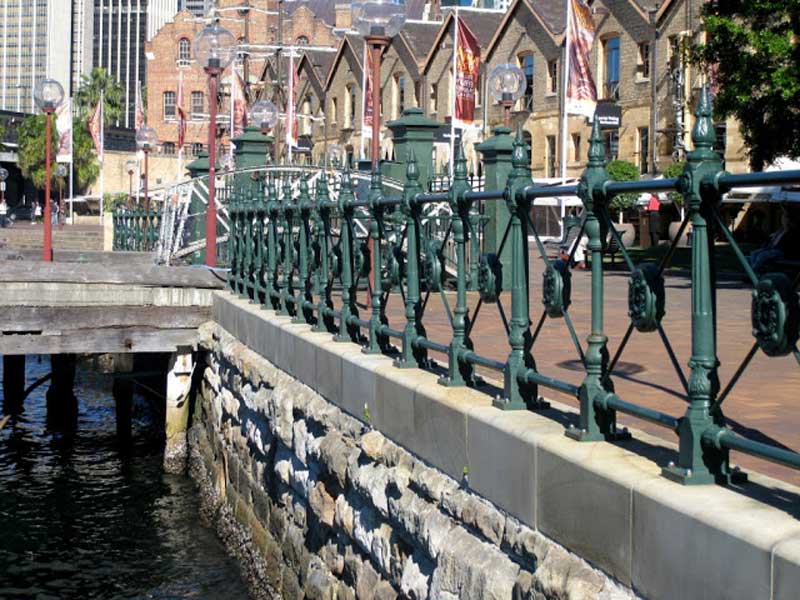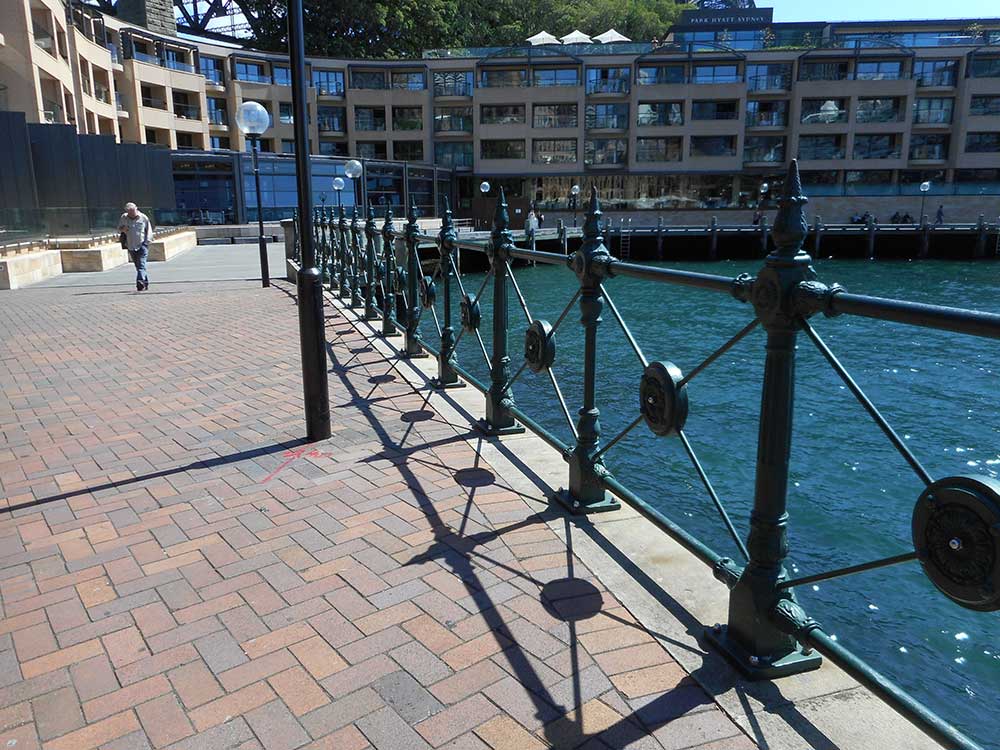Visit Sydney Australia






Circular Quay Seawall
Location: Sydney HarbourAs shipping increased in Sydney Harbour, it became apparent that the wharves on the western shores of Sydney Cove would soon become incapable of carrying the increased traffic they would be required to take. The harbour itself was deep enough to take the larger ships being built but the jetties and wharves were barely adequate. In 1836, a plan was mooted to reclaim the mudflats at the head of the cove and install a semi-circular seawall around the cove to allow bigger ships to enter and berth there. As the project required the reclamation of land attached to Government House, it received considerable opposition and took five years to win Government and public approval.

Work commenced in 1841, first on the eastern side and later on the western and southern sides (1854) after reclamation of the mudflats had been completed. It was the last major public work to utilise convict labour. Rubble from the Argyle Cut, which at the time was still being carved out of the hillsides of the Rocks, was used as fill behind the stone retaining wall, an area of just under a hectare. The wall was cut from rock quarried on Cockatoo Island and brought to the site by boat. It remains intact today, though parts of it are covered by wharves and concrete. The section of seawall around Farm Cove became known as the 30 year wall because that is how long it took for it to be built (1848 - 1879).
